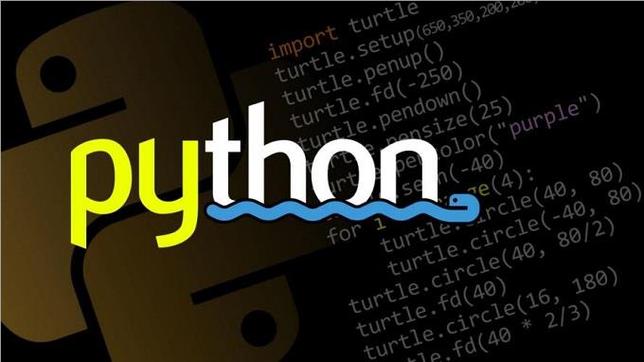🧑 博主简介:阿里巴巴嵌入式技术专家,深耕嵌入式+人工智能领域,具备多年的嵌入式硬件产品研发管理经验。
📒 博客介绍:分享嵌入式开发领域的相关知识、经验、思考和感悟,欢迎关注。提供嵌入式方向的学习指导、简历面试辅导、技术架构设计优化、开发外包等服务,有需要可加文末联系方式联系。
💬 博主粉丝群介绍:① 群内高中生、本科生、研究生、博士生遍布,可互相学习,交流困惑。② 热榜top10的常客也在群里,也有数不清的万粉大佬,可以交流写作技巧,上榜经验,涨粉秘籍。③ 群内也有职场精英,大厂大佬,可交流技术、面试、找工作的经验。④ 进群免费赠送写作秘籍一份,助你由写作小白晋升为创作大佬。⑤ 进群赠送CSDN评论防封脚本,送真活跃粉丝,助你提升文章热度。有兴趣的加文末联系方式,备注自己的CSDN昵称,拉你进群,互相学习共同进步。
解决Python报错:解决 FileNotFoundError: [Errno 2] No such file or directory: PosixPath('xxx'

在Python编程中,FileNotFoundError 表示尝试访问或操作一个不存在的文件或目录。当你使用 pathlib 模块处理路径时,它通常会引发 FileNotFoundError: [Errno 2] No such file or directory: PosixPath('xxx') 错误。在本文中,我们将深入探讨此错误及其解决方案。
错误背景
当你尝试打开一个不存在的文件时,例如:
from pathlib import Path
file_path = Path('nonexistent_file.txt')
with file_path.open('rb') as file:
content = file.read()
运行这段代码时,Python将会抛出如下错误:
FileNotFoundError: [Errno 2] No such file or directory: PosixPath('nonexistent_file.txt')
这条错误信息告诉我们,在试图打开文件 'nonexistent_file.txt' 时发生了FileNotFoundError,因为该文件不存在。
发生原因
FileNotFoundError: [Errno 2] No such file or directory: PosixPath('xxx') 错误发生的常见原因包括:
- 文件路径错误:给定的文件路径不正确,文件不存在。
- 文件未创建:文件预期在某些操作后创建,但未能按预期创建。
- 路径拼写错误:文件或目录路径中的拼写错误。
- 文件权限不足:没有在特定目录下创建新文件的权限。
- 相对路径问题:在错误的工作目录下操作文件。
解决方案
要解决 FileNotFoundError: [Errno 2] No such file or directory: PosixPath('xxx') 错误,可以通过以下方法确保文件路径正确以及文件存在。
1. 确认文件路径是否正确
确保文件路径正确,可以使用 pathlib 模块来验证路径是否正确:
from pathlib import Path
file_path = Path('nonexistent_file.txt')
if not file_path.is_file():
print(f"File not found: {file_path}")
else:
with file_path.open('rb') as file:
content = file.read()
2. 检查文件是否存在
在尝试打开文件之前,先检查文件是否存在:
from pathlib import Path
file_path = Path('nonexistent_file.txt')
if file_path.exists():
with file_path.open('rb') as file:
content = file.read()
else:
print(f"File not found: {file_path}")
3. 路径拼写检查
确保路径中的文件名和目录名没有拼写错误。如果路径中包含特殊字符和空格,请确保正确处理。
from pathlib import Path
file_path = Path('path/to/file with spaces.txt')
# 确保路径名无误
print(f"File path: {file_path}")
if file_path.exists():
with file_path.open('rb') as file:
content = file.read()
else:
print(f"File not found: {file_path}")
4. 使用绝对路径
相对于使用相对路径,使用绝对路径可以减少路径问题:
from pathlib import Path
# 使用绝对路径
file_path = Path('relative/path/to/nonexistent_file.txt').resolve()
if file_path.exists():
with file_path.open('rb') as file:
content = file.read()
else:
print(f"File not found: {file_path}")
5. 创建文件或目录
如果文件缺失,考虑在代码中创建所需文件或目录:
from pathlib import Path
file_path = Path('path/to/new_file.txt')
# 创建目录结构
file_path.parent.mkdir(parents=True, exist_ok=True)
# 创建并写入文件
with file_path.open('wb') as file:
file.write(b"Hello, World!")
# 检查文件是否写入成功
if file_path.exists():
print(f"File created: {file_path}")
else:
print(f"Failed to create file: {file_path}")
6. 修改当前工作目录
如果需要操作相对路径,请确保当前工作目录正确:
import os
from pathlib import Path
# 修改当前工作目录
os.chdir('/absolute/path/to/directory')
file_path = Path('nonexistent_file.txt')
if file_path.exists():
with file_path.open('rb') as file:
content = file.read()
else:
print(f"File not found: {file_path}")
7. 捕获异常并处理
使用 try-except 块捕获 FileNotFoundError 并处理异常情况:
from pathlib import Path
file_path = Path('nonexistent_file.txt')
try:
with file_path.open('rb') as file:
content = file.read()
except FileNotFoundError as e:
print(f"Caught an exception: {e}")
示例与应用
让我们通过一个更完整的示例展示解决方案:
from pathlib import Path
def read_file(file_path):
file_path = Path(file_path)
try:
if not file_path.exists():
# 如果文件不存在,抛出自定义错误
raise FileNotFoundError(f"File not found: {file_path}")
# 打开文件并读取内容
with file_path.open('rb') as file:
return file.read()
except FileNotFoundError as e:
# 捕获并处理异常
print(f"Caught an exception: {e}")
return None
# 示例使用
file_path = 'nonexistent_file.txt'
content = read_file(file_path)
if content:
print("File read successfully.")
else:
print("Failed to read file.")
在这个示例中,我们通过检查文件路径确保在访问属性前判断对象是否为预期类型,并在类型错误时抛出自定义的 FileNotFoundError。
总结
FileNotFoundError: [Errno 2] No such file or directory: PosixPath('xxx') 错误的常见原因包括文件路径错误、文件未创建、路径拼写错误、文件权限不足以及相对路径问题。通过确认文件路径是否正确、检查文件是否存在、路径拼写检查、使用绝对路径、创建文件或目录、修改当前工作目录以及捕获异常并处理,我们可以有效避免并解决此类错误。
希望本文对你理解和解决 FileNotFoundError: [Errno 2] No such file or directory: PosixPath('xxx') 错误有所帮助。如果你有任何问题或建议,欢迎在评论区留言讨论!
























 17万+
17万+

 被折叠的 条评论
为什么被折叠?
被折叠的 条评论
为什么被折叠?










